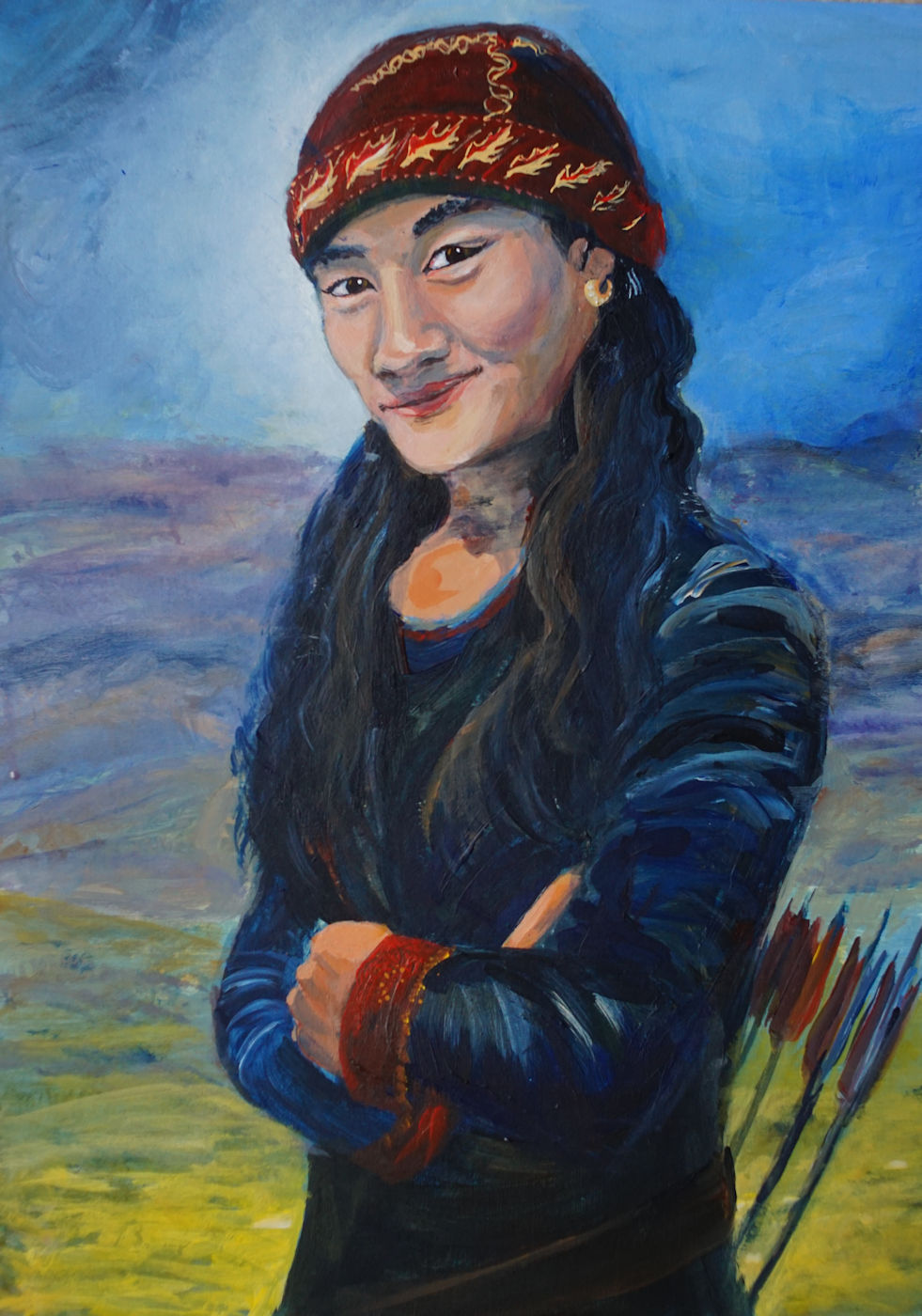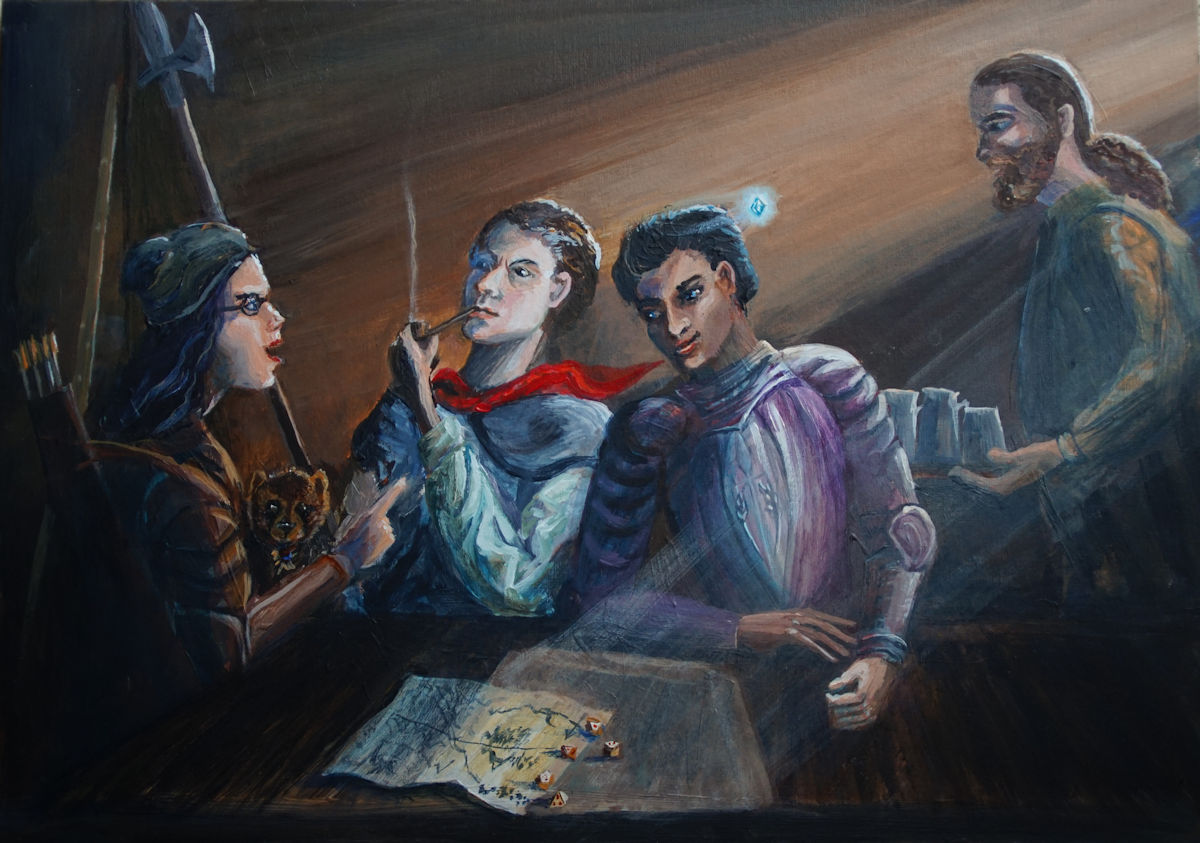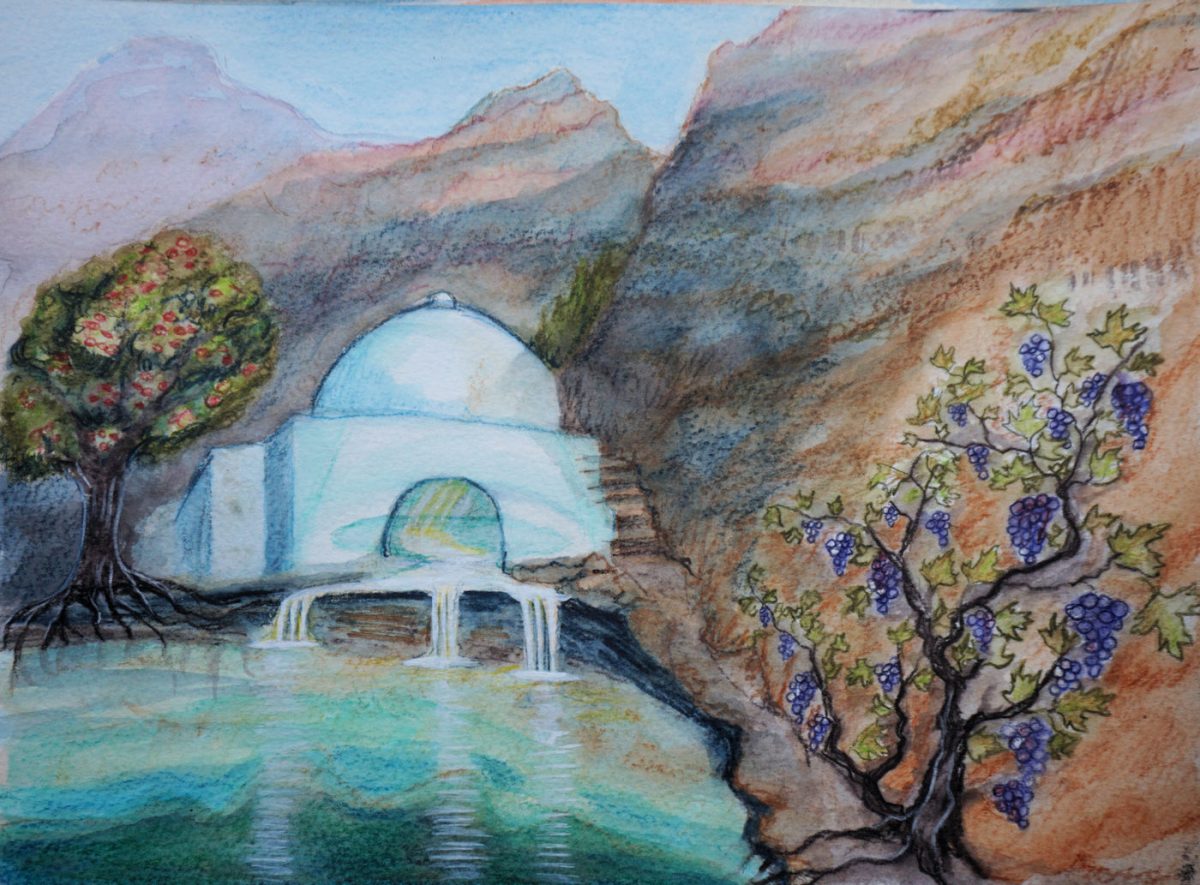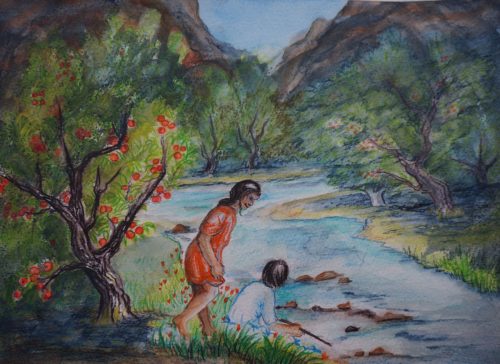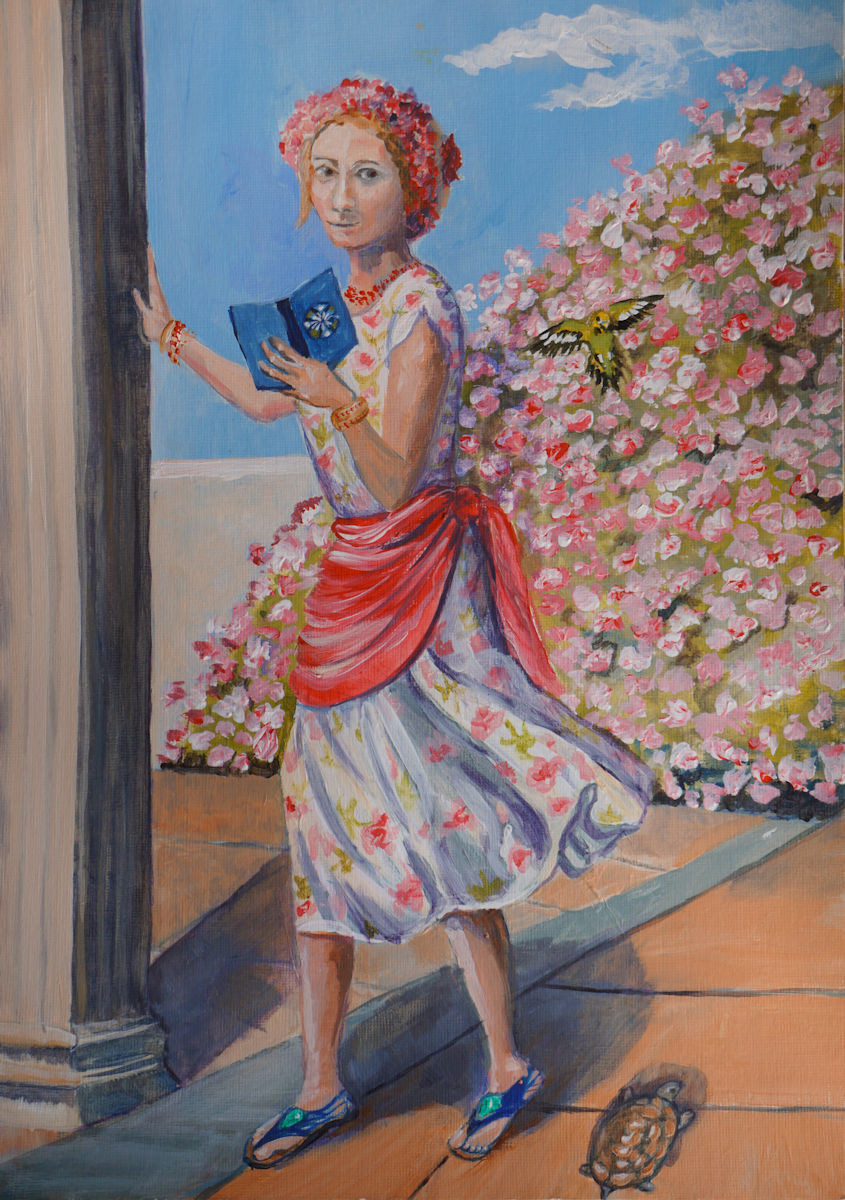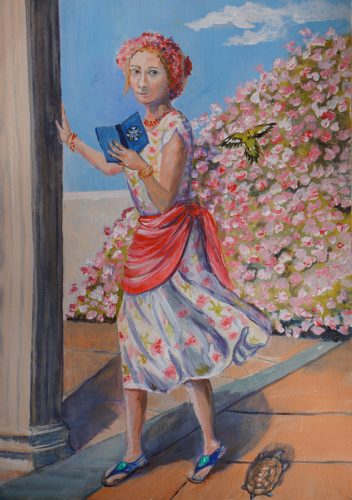The painting above is inspired by a photo I saw of a girl from Kazakhstan at the World Nomad Games. The two below are sketches done for fun, and without references. 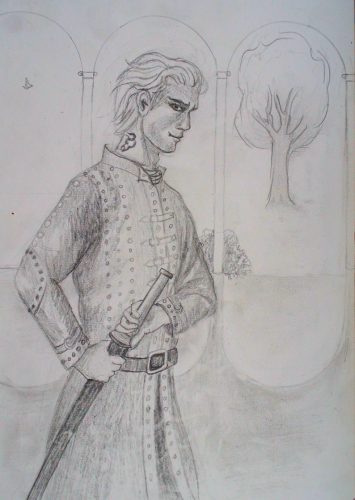
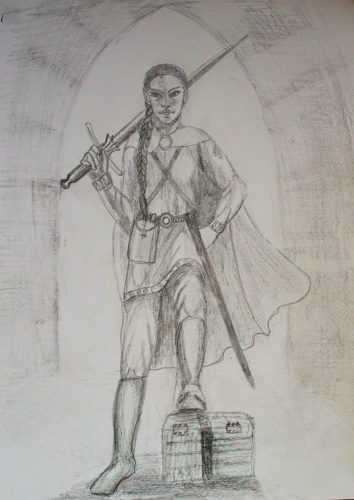
Tag: figure
Commission: Adventuring Party at Leisure
Completed version of this commissioned painting of a D&D party: first the quick A4 sketch: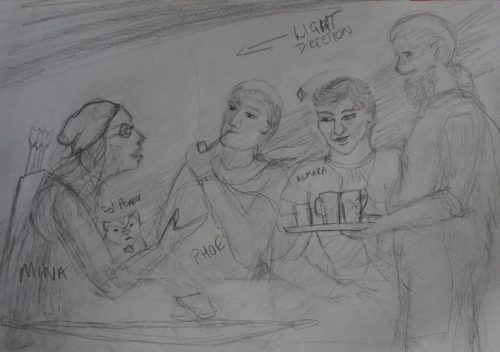
And then the final painted version: I’m told the adventurers are pleased with it. The Innkeeper on the right is based on the GM (Game Master), who commissioned the painting and was lovely to work with. 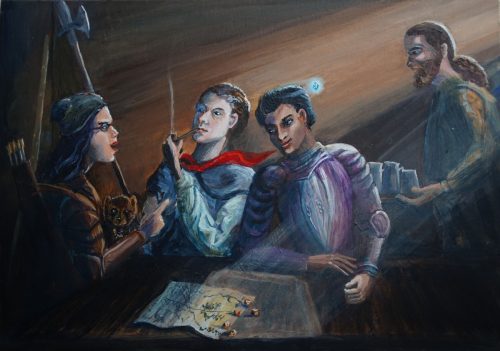 As you may have guessed, the lighting and composition was inspired by Caravaggio’s wonderful painting, The Calling of St Matthew: I thought I might as well aim high. But this little painting is just A3 in size, whereas Caravaggio’s original is about three meters square!
As you may have guessed, the lighting and composition was inspired by Caravaggio’s wonderful painting, The Calling of St Matthew: I thought I might as well aim high. But this little painting is just A3 in size, whereas Caravaggio’s original is about three meters square!
With commissioned paintings, I would usually discuss ideas with you, then email you a photo of a rough sketch, then later, email a small first-draft incomplete painted version for discussion, and then finally a completed high resolution image.
I am open to making paintings that are only supplied digitally, if you want art to print out yourself and don’t want a physical copy. However, in this case, the person who commissioned the painting did want the original as well as the photo, so it was sent out to them by post.
Three illustrations for a poem
My poet friend Pete Clark sent me his tragic fantasy poem The Well, wondering if I might feel inspired to make some art for it. Did I ever! It’s got some fabulous vivid imagery and so I dived into making these three watercolours with enthusiasm. I think the one above is probably my favorite, but all three were a lot of fun to make.
We had some discussion about what the setting should be like. I felt that the setting seemed Eastern Mediterranean, but the contrast of shining blue streams in a valley with red rock mountains reminded me of photos I’d seen of the Little Colorado River. This was what I ended up with:
And then this painting of the two protagonists of the poem is of course inspired partially by the ancient Roman statue known as the Dying Gaul (a copy of a lost Greek original). 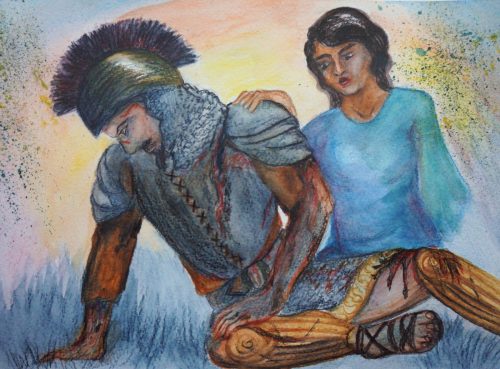
Do go to Pete’s site to read the entire poem to see the context. The Well.
A Floral Portrait
A friend of mine sent me a quick selfie a while ago of herself wearing a dress that she had made. I thought the pose and expression was interesting (as well as the dress being lovely) and so I made a painting of it – though, I had to change a lot of things.
The original photo was taken with a phone camera into a mirror, indoors in artificial light. This is the painting I made from it.
My friend is a great lover of books, so I turned the phone in her hand into a book, and added her pet budgie and tortoise to the picture to keep her company, along with an enormous rose-bush and a random pillar.
This picture is only 14 by 10 inches, so I’m quite pleased I achieved a likeness in such a small space.
I went through several iterations of this painting, and photographed each one as I went along, so I thought it might be interesting to post each one.
Version 1. Her face looks washed out, the shadows look odd and the pillar is wiggly. Also there’s something odd about her pose.
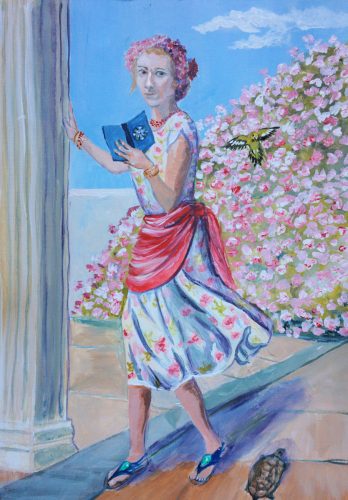
Version 2: better lighting, her face is more ‘there’ and her legs are in a more natural position. 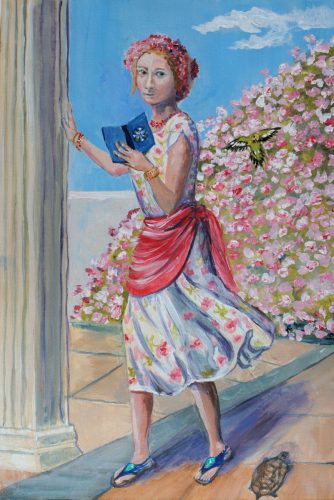
Version 3 : I realised that although the figure and the tortoise had shadows, I had forgotten to give the pillar one! The shadows still don’t look quite right here, but at least there IS a shadow on the pillar where it should be. 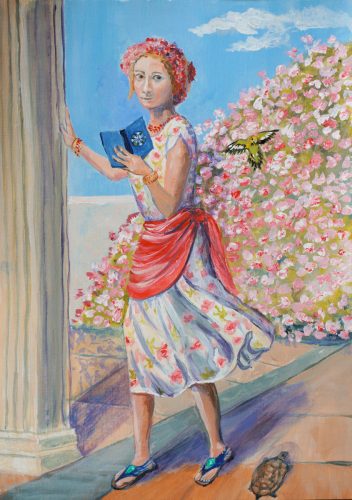
Now scroll up to see the final version where I fixed the shadows and made a few final tweaks to the lighting!
You can see the lighting is slightly different again,and that changes the colours. I know that some people feel that paintings should be scanned rather than photographed, because the lighting is consistent then, but… well.
The thing is that a real painting hanging in a real room does change with the light. This is not a digital image: it’s made up of layers of variably translucent paint, and it responds to the light; its colour, its warmth, its direction. Putting it in a scanner where it will be lit by a single flash of artificial light is no more ‘accurate’ than photographing it in warm south afternoon light, or colder north-facing morning light. I now take photos of my paintings in various locations, then choose one, adjust colours in software to pick the one where the light pleases me and the image on my laptop matches most closely with the image I have set in front of me. But none of the photographs are wrong.

